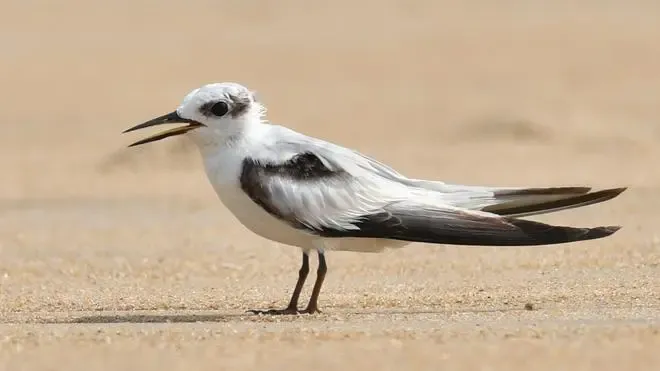Have Rare Coastal Birds Returned to Chennai After Four Decades?

Synopsis
Key Takeaways
- Chennai witnesses the return of two rare coastal bird species.
- The Oystercatcher and Saunder's Tern were last seen nearly 40 years ago.
- This sighting is a positive sign for coastal ecosystem recovery.
- Conservation efforts are crucial for protecting these habitats.
- The Adyar estuary remains a vital stopover in the migratory bird route.
Chennai, Oct 4 (NationPress) The birdwatching community in Chennai has been graced with an astonishing event — the return of two rare coastal bird species, the Oystercatcher and the Saunder's Tern, to the Adyar estuary. This marks the first confirmed sighting of these birds in the area in almost four decades, igniting optimism for the restoration of its fragile coastal ecosystems.
Historically, these birds were frequent inhabitants along the shores of Tamil Nadu, particularly around Point Calimere and Kanyakumari. They had adapted remarkably to the region, returning each season as if they were near-residents.
However, their numbers dwindled due to coastal degradation, habitat disruption, and decreasing prey availability, leading to their rarity in Chennai’s birdwatching circles.
The Oystercatcher is a visually striking, ground-nesting marine bird typically found on sandbars and mudflats. It primarily feeds on fish, crustaceans, and molluscs, and its absence from the usual winter flocks in Chennai makes its return particularly significant.
Conversely, the Saunder's Tern has long been under-documented due to its former classification as a subspecies of the more common Little Tern.
Both species flourish in undisturbed, nutrient-rich coastal wetlands — the very type of habitat the Adyar estuary struggles to preserve amidst urban development.
This rediscovery suggests a potential recovery for one of Chennai’s most delicate yet essential natural habitats.
The Adyar estuary, long burdened by pollution, encroachment, and tidal disruptions, still possesses ecological richness capable of attracting rare migratory birds.
Such sightings emphasize the estuary’s critical role as a vital stopover in the broader Indian Ocean flyway, linking Chennai’s waters to global migration pathways. For local naturalists, this occurrence represents not just a moment of awe, but a barometer of environmental health.
The return of these long-missing birds indicates improved conditions, at least for the moment, and highlights the urgent need to protect the remnants of Chennai’s wetlands.
Conservationists argue that ongoing efforts to restore mudflats, minimize pollution, and protect tidal flows could revive more species that were once plentiful but are now fading memories. This unexpected visitation serves as a subtle yet powerful reminder — Chennai’s coastal ecosystems still hold the potential to recover and welcome back the life they once nurtured.









